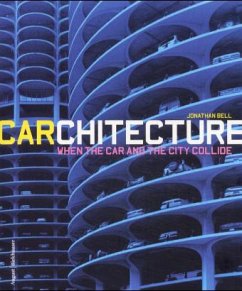The automobile has brought about changes to the landscape that are nothing short of revolutionary. The dramatic reconfiguration of cities and the countryside to accommodate our taste for freedom of movement has been matched by a change in the way buildings themselves have been planned. Today, CAD and car-building techniques have opened up new possibilities for architectural design and this book, edited by the London-based architect Alex de Rijke, argues that the influence of the car on architectural and urban thinking is greater than ever. De Rijke's selection of ideas, photographs, texts and completed projects by a variety of architects explores the parallel development of cars and architecture during the second half of the twentieth century, and provides a compelling manifesto for the future of building design.
Perlentaucher-Notiz zur FR-Rezension
Wie der Titel des Bandes schon mehr oder weniger schön sagt, geht es um das Verhältnis von Auto und Architektur, oder, in den Worten von Rezensent Ulf Erdmann Ziegler, um Mobilität und Immobilität, die hier so in Beziehung gesetzt werden, dass der Gegenstand in einen "analytischen Schwebezustand" gerät. So ganz klar wird dieser theoretische Versuch, Häuser und Autos zusammenzudenken in der Rezension nicht, inspiriert jedoch fühlt sich Ulf Erdmann Ziegler auf jeden Fall. Die "visuellen Quellen", rühmt er, sind "mit äußerstem Aufwand recherchiert", aufschlussreich ist ein "Lexikon der Autobegriffe" und außerordentlich begeistert ist der Rezensent von einer Liste von Autonamen: "Uno/Punto/Dino/Saxo/Mondeo...". Nun ja. Auf jeden Fall aber gibt es über bloße Listen hinaus nicht nur die vielen Bilder, sondern auch eine Reihe von "tief- und abgründigen Essays", die das Buch offenkundig sehr lesenswert machen.
© Perlentaucher Medien GmbH
© Perlentaucher Medien GmbH

